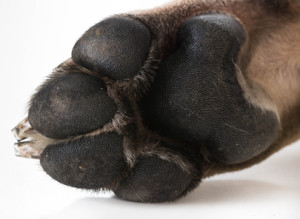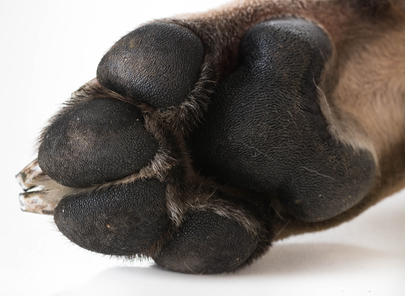
I knew a woman who was staying in a six-month drug and alcohol residential treatment center. She began to forget where she left her cigarettes. At first, it was just frustrating and kind of embarrassing. She would check the cafeteria; the living room; the group room. She’d go upstairs to her bedroom. She’d ask other residents if they saw her cigarettes. She’d check outside at the picnic table where the residents smoked. After awhile, she began to worry that she was losing her mind and even became fearful she could end up in a mental hospital.
There was a guy in his thirties who worked out with free weights in his basement. He’d been doing this since he began playing sports in his teens, but got away from it when his drinking became more important. After a few weeks of abstinence, he decided to start lifting again and went down to his basement. He started out with a fairly light amount of weight and intended to do some bench presses. But he almost dropped the bar on his windpipe. He spent a few days worried that his drinking had physically damaged him to the point that he didn’t have the strength and coordination to lift weights.
Both of these individuals were in the early stages of recovery and both were experiencing problems with post acute withdrawal (PAW) symptoms. Learning about PAW helped each of them see that they weren’t losing their mind, nor had they caught some degenerative muscle disease from their drinking and drug use. The material on PAW that I’ve found to be most helpful is that published by Terence Gorski. He discusses PAW symptoms and how to manage them in Staying Sober, and Straight Talk About Addiction, which are available through Amazon or Herald House Independence Press. You can even find a free comprehensive guide on PAW, excerpted from Staying Sober, on Terry Gorski’s Blog.
“Post acute withdrawal is a group of symptoms of addictive disease that occur as a result of abstinence from addictive chemicals.” PAW symptoms can appear as early as 7 to 14 days into abstinence—just as the person stabilizes from any acute withdrawal symptoms they might experience. They are a combination of the damage done to the nervous system from alcohol and drugs and the psychosocial stress of now trying to cope in life without drugs and alcohol. Gorski said there are six major types of PAW symptoms: 1) inability to think clearly; 2) memory problems; 3) emotional overreactions or numbness; 4) sleep disturbances; 5) physical coordination problems; and 6) stress sensitivity. The PAW Comprehensive Guide on Terry Gorski’s Blog has a helpful discussion of each of these PAW symptoms.
The symptoms of PAW typically grow to peak intensity over three to six months after abstinence begins. The damage is usually reversible, meaning the major symptoms go away in time if proper treatment is received. So there is no need to fear. With proper treatment and effective sober living, it is possible to learn to live normally in spite of the impairments. But the adjustment does not occur rapidly. Recovery from the nervous system damage usually requires from six to 24 months with the assistance of a healthy recovery program.
Gorski noted that research has also shown that PAW symptoms can go through cycles or crop up without any triggers or stressors going on. The classic pattern of slips that seem related to PAW cluster around sobriety dates—30, 60, 90 days; 6 or 12 months. They can occur without an obvious pattern or trigger. People in recovery from long-term opiate or stimulant use have reported times of PAW symptoms for no apparent reason for up to ten years after their abstinence. “Individuals who intend to have consistent long-term recovery must learn to recognize these symptoms and learn how to manage them.”
A helpful tool to do this can be found in Gorski’s Staying Sober Workbook, the Post Acute Withdrawal (PAW) Self Evaluation. I encourage people in early recovery to make a copy of their PAW self evaluation, date it and then hold on to it. If they later experience a time when PAW symptoms reemerge, they can compare it to the earlier time when PAW was in full bloom. This can be helpful in judging just how dangerous the most recent time of PAW is to their recovery. If a stressor after one year of abstinence can trigger PAW symptoms at the level of intensity you were having with only two or three months of abstinence, that’s crucial information for someone in recovery to have.
The booklet The Relapse/Recovery Grid by Gorski is an excellent summary of both his Developmental Model of Recovery and the Relapse Process. There is a handy grid that provides you with a comparison of both the Developmental Model of Recovery and the Relapse Process. I’ve found this grid to be very helpful when doing psycho-educational presentations on both recovery and relapse. One of its features relevant to our discussion here is how the above noted PAW symptoms are the heart of the initial stage of the Relapse Process, Internal Dysfunction. Here is the introductory paragraph on Internal Dysfunction:
When under high stress, many recovering people begin to have difficulty thinking clearly, managing feelings and emotions, and remembering things. One of the main culprits leading to these problems appears to be a tendency to overreact to stressors. Scientists call this neurological augmentation. Many recoverying people refer to this as stress sensitivity. People perceive light to be brighter, sound to be louder, and touch to be intrusive. They startle easily and quickly, and become distracted by things that happen around them. Eventually, the ability to sleep restfully is disrupted. This heightens stress and fatigue to the point where people become accident-prone.
This illustrates the importance for someone to recognize, monitor and manage PAW symptoms throughout recovery. The person who can effectively do so increases the likelihood of never lapsing or relapsing into active drug or alcohol use again because they are neutralizing a relapse in its initial phase. Also look at “Managing Your PAWS.”
I have read and used Terence Gorski’s material on relapse and recovery for most of my career as an addictions counselor. I’ve read several of his books and booklets; and I’ve completed many of his online training courses. He has a blog, Terry Gorski’s Blog, where he graciously shares much of what he has learned, researched and written over the years. This is one of a series of articles based upon the material available on his blog and website.





